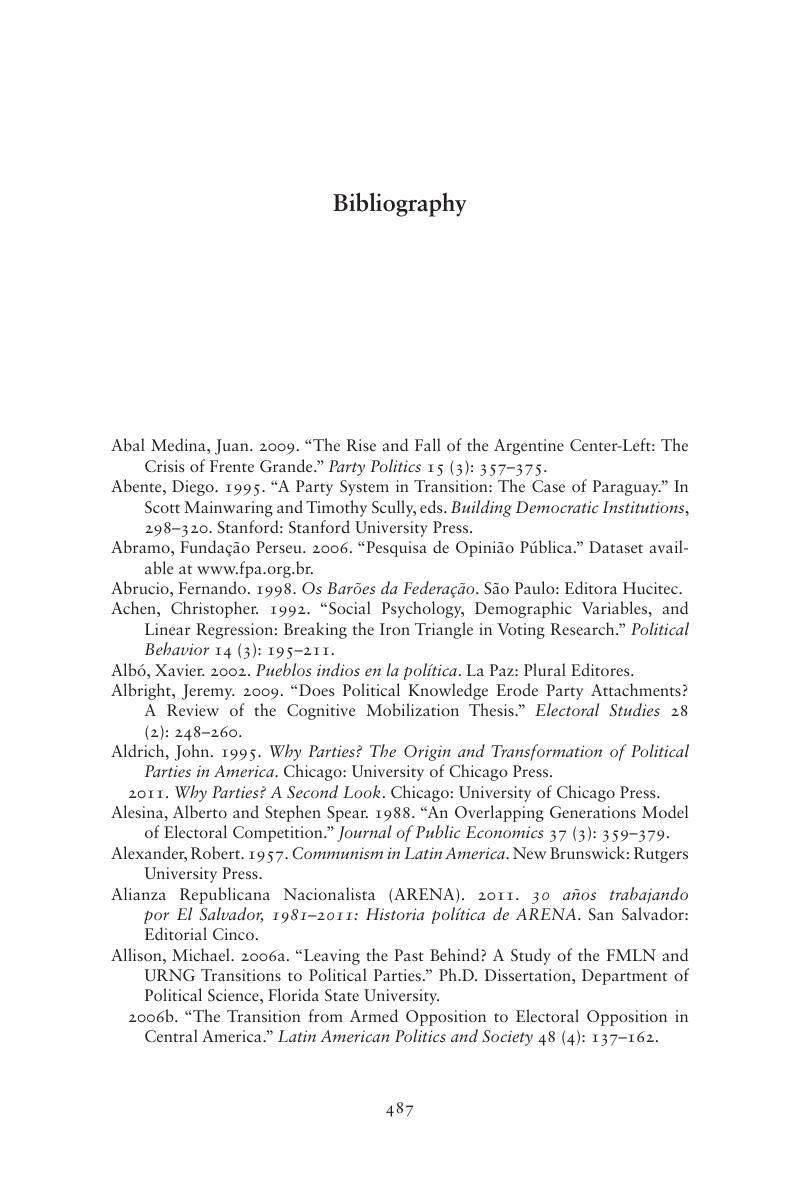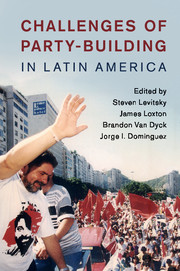Book contents
- Challenges of Party-Building in Latin America
- Challenges of Party-Building in Latin America
- Copyright page
- Contents
- Figures
- Tables
- Contributors
- Book part
- Abbreviations
- 1 Introduction
- Part I Party–Voter Linkages and Challenges of Brand-Building
- Part II Challenges of Organization-Building
- Part III Organizational Inheritance: Alternative Platforms for Party-Building
- Part IV Failed Cases (and a Future One)
- Bibliography
- Index
- References
Bibliography
Published online by Cambridge University Press: 11 October 2016
- Challenges of Party-Building in Latin America
- Challenges of Party-Building in Latin America
- Copyright page
- Contents
- Figures
- Tables
- Contributors
- Book part
- Abbreviations
- 1 Introduction
- Part I Party–Voter Linkages and Challenges of Brand-Building
- Part II Challenges of Organization-Building
- Part III Organizational Inheritance: Alternative Platforms for Party-Building
- Part IV Failed Cases (and a Future One)
- Bibliography
- Index
- References
Summary

- Type
- Chapter
- Information
- Challenges of Party-Building in Latin America , pp. 487 - 530Publisher: Cambridge University PressPrint publication year: 2016



